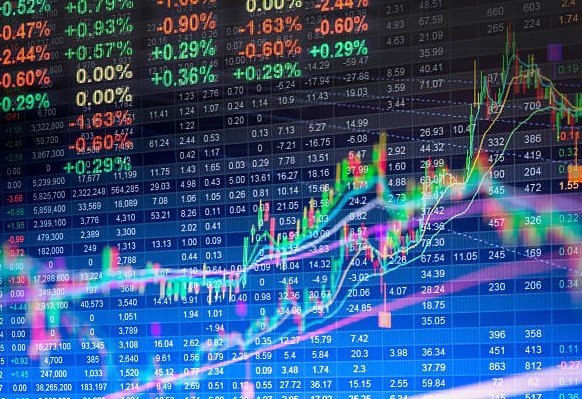With Trump’s EU deal sealed, attention shifts to Beijing’s next move and oil politics with Russia and Iran
Asia’s stock markets wobbled on Monday as investors sat tight ahead of fresh trade negotiations between the world’s two biggest economies. The new round of U.S.–China talks, slated to begin later in Stockholm, could set the tone for markets from Tokyo to Jakarta — especially with tariffs and energy flows in the spotlight.
The meeting will be led by U.S. Treasury Secretary Scott Bessent and China’s Vice Premier He Lifeng. After a weekend of high-stakes diplomacy in Europe, the mood on the trading floor is more cautious than confident.
A Nervous Start to the Week
Markets across the Asia-Pacific were mostly subdued by midday Monday. Gains were modest where they existed at all, and investors appeared hesitant to make bold moves before any headlines landed from Stockholm.
In Tokyo, the Nikkei 225 edged down 0.2%, while South Korea’s Kospi drifted sideways, held up only by a late bump in chipmakers. The Hang Seng clawed its way into positive territory — barely — as Chinese tech giants rode optimism that fresh talks might delay any new tariffs.
Meanwhile, Australia’s ASX 200 dipped slightly, weighed down by energy stocks reacting to uncertainty over Beijing’s oil buying behavior.
One sentence. Flat mood. That’s how Monday felt.
Who’s at the Table — And What They Want
The Stockholm talks bring two heavyweights face-to-face: Scott Bessent, the hedge fund veteran turned Treasury chief, and He Lifeng, one of Xi Jinping’s most trusted economic hands.
They’re expected to tackle far more than tariffs. On the table, according to U.S. officials:
-
Extension of the current trade truce expiring in September
-
China’s continued imports of Russian and Iranian oil despite Western sanctions
-
Currency management and capital flows between the yuan and dollar
Bessent told Fox Business Sunday night that he’s “cautiously optimistic” a truce extension can be secured. But on oil? His tone was firmer: “We need transparency. We need accountability.”
He Lifeng hasn’t spoken publicly, but Chinese state media framed the talks as “constructive and necessary.”
That’s Beijing-speak for: no guarantees.

Recent EU Deal Adds Pressure to the Talks
It’s no coincidence these talks come right after Trump’s headline-grabbing deal with the European Union — one that settled on a 15% flat tariff and secured $750 billion in energy buys from Europe.
Markets took note. Investors are now wondering if China will get similar terms, or worse.
And if Trump feels emboldened?
That’s the wild card.
“Beijing doesn’t want to look like it’s chasing Washington’s tail,” said Serena Ng, a trade policy analyst in Singapore. “But they can’t afford another tariff escalation either — especially not with oil prices stuck where they are.”
One small paragraph. Big tension behind the scenes.
Oil: The Elephant in the Room
Arguably the most explosive topic at the talks isn’t tech or tariffs — it’s energy.
U.S. officials are pressing China over its imports of sanctioned Russian and Iranian oil, which have quietly surged over the past six months. Analysts estimate Beijing has purchased over 1.2 million barrels per day combined from both countries — despite Washington’s efforts to isolate those regimes economically.
China claims it’s securing national energy needs. The U.S. sees it as undermining sanctions policy.
And if the two sides can’t bridge that gap?
Markets may not like the answer.
Regional Market Snapshot: Mixed Signals
Here’s how Asia-Pacific indexes looked as of 1:00 PM HK/SIN time:
| Index | Movement (%) | Notes |
|---|---|---|
| Nikkei 225 (Tokyo) | -0.21% | Exporters cautious ahead of Stockholm |
| Kospi (Seoul) | Flat | Chip stocks balanced out shipping slump |
| Hang Seng (HK) | +0.18% | Tech optimism outweighed oil jitters |
| ASX 200 (Sydney) | -0.31% | Energy stocks under pressure |
| Straits Times (SG) | +0.12% | Banks held firm, REITs declined slightly |
It’s a messy picture — because traders don’t have answers yet.
What Investors Are Saying
Fund managers across Asia are playing wait-and-see. Few are willing to shift allocations aggressively before they see where the trade winds blow.
“Everyone’s just trying not to get caught flat-footed,” said Chloe Tsang, an equities strategist at Maybank. “There’s no panic, but there’s no FOMO either.”
U.S. equities futures were steady in early Asia trading. The dollar index ticked marginally higher, reflecting cautious demand for safe havens. Gold held around $2,010 an ounce, while Brent crude remained just under $84 — awaiting clarity from Stockholm.
One sentence here. Everyone’s frozen.
Why These Talks Matter More Than Usual
This isn’t just another round of economic diplomacy.
With Trump stacking up trade wins in Europe and Japan, China is under real pressure to prove it still holds leverage. And with the U.S. election season inching closer, domestic optics matter more than ever.
The Biden wing, still vocal despite Trump’s hold over foreign policy, has already criticized any “soft stance” toward Beijing — especially if energy sanctions get diluted.
So for both sides, it’s not just about economics. It’s about image.
And image can move markets.
